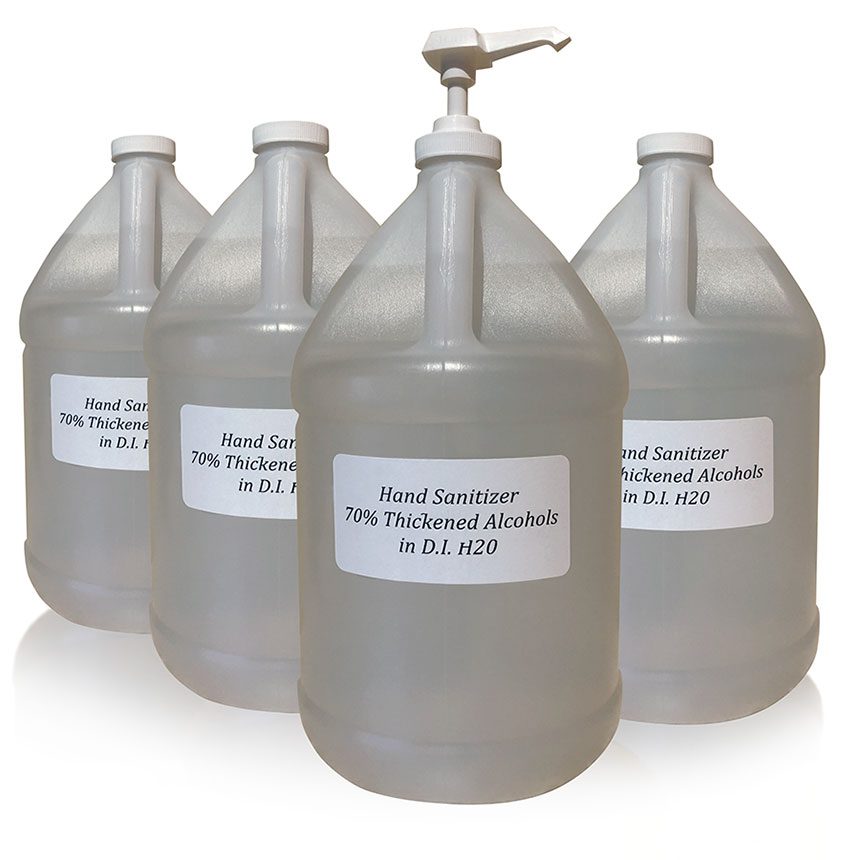No, you should not flush hand sanitizer down the toilet. It can cause plumbing issues and environmental harm.
Hand sanitizer contains chemicals that can disrupt your plumbing system and harm the environment. These substances can damage sewage treatment plants and aquatic life when they enter water systems. Proper disposal methods are crucial to avoid these problems. Instead of flushing, consider disposing of hand sanitizer in regular household trash, following local waste disposal guidelines.
Always check the product label for specific disposal instructions. Responsible disposal helps maintain a healthy plumbing system and protects the environment from potential chemical contamination. Make sure to educate others about the importance of proper disposal practices for household chemicals.
Introduction To Hand Sanitizer Disposal
Hand sanitizer has become a household necessity. But many wonder how to dispose of it properly. This blog will guide you on disposing of hand sanitizer. We’ll cover common practices and the importance of proper disposal.
Common Practices
Many people dispose of hand sanitizer without thinking. Some pour it down the toilet. Others might throw it in the trash. But are these methods safe?
- Pouring it down the toilet
- Throwing it in the trash
- Recycling the container
These practices might seem convenient. But they can harm the environment. Hand sanitizer contains chemicals. These chemicals can pollute water and soil.
Importance Of Proper Disposal
Proper disposal of hand sanitizer is crucial. It protects our environment. It also keeps our plumbing systems safe.
| Reason | Impact |
|---|---|
| Environmental Protection | Reduces water and soil pollution |
| Plumbing Safety | Prevents pipe damage and blockages |
Never flush hand sanitizer down the toilet. It can damage pipes. It can also harm marine life.
Dispose of hand sanitizer at a hazardous waste facility. Check your local guidelines. Some areas have special disposal programs.

Credit: www.aus-test.com.au
Ingredients In Hand Sanitizer
Hand sanitizer has become essential in our daily lives. Many people wonder if they can flush hand sanitizer down the toilet. To answer this, we need to understand the ingredients in hand sanitizer.
Active Components
The main active component in hand sanitizer is usually alcohol. Alcohol can be in forms like ethanol or isopropanol. These alcohols kill germs and bacteria. Another ingredient is water, which helps in the application process. Some sanitizers also contain hydrogen peroxide. This is to prevent bacteria from growing in the bottle.
Potential Hazards
Flushing hand sanitizer down the toilet can be harmful. Alcohol in large amounts can disrupt water treatment systems. It can also harm aquatic life. Hydrogen peroxide can react with other chemicals in the water. This reaction can create harmful byproducts. Other ingredients like fragrances and dyes can also be dangerous. These can pollute water sources and harm wildlife.
| Ingredient | Potential Hazard |
|---|---|
| Alcohol (Ethanol, Isopropanol) | Disrupts water treatment, harms aquatic life |
| Hydrogen Peroxide | Reacts with chemicals, harmful byproducts |
| Fragrances and Dyes | Pollutes water, harms wildlife |
Understanding these ingredients helps us see the risks. Do not flush hand sanitizer down the toilet. Dispose of it properly to protect the environment.
Environmental Impact
Flushing hand sanitizer down the toilet can harm the environment. This action impacts water pollution and wildlife. Understanding these effects helps us protect nature.
Water Pollution
Hand sanitizer contains chemicals that pollute water. When flushed, these chemicals reach water bodies.
Once there, they mix with rivers, lakes, and oceans. This harms water quality and affects ecosystems.
Key ingredients in hand sanitizer, like alcohol and triclosan, are not removed by water treatment plants. These chemicals remain in the water, affecting its safety.
Effect On Wildlife
Wildlife suffers from water pollution caused by hand sanitizer. Fish and aquatic animals are especially vulnerable.
Polluted water affects their health and reproduction. The chemicals cause imbalances in their habitats.
Birds and land animals that drink polluted water also face risks. They can get sick from the harmful substances.
Protecting wildlife is crucial. Avoid flushing hand sanitizer to help keep nature safe.

Credit: mlienvironmental.com
Plumbing Concerns
Flushing hand sanitizer down the toilet may seem harmless. But it can cause major plumbing issues. Understanding these concerns can save you time and money.
Potential Blockages
Hand sanitizer is often gel-based. This gel can stick to the pipes. Over time, the gel builds up. It can create blockages in your plumbing system. Blocked pipes can lead to slow drains. In worst cases, it can cause sewage backups.
Damage To Pipes
Some hand sanitizers contain chemicals. These chemicals can be harsh. They can corrode pipes over time. Corroded pipes are weaker. They are more likely to leak or burst. This can lead to costly repairs.
| Type of Issue | Description |
|---|---|
| Blockages | Gel builds up and blocks pipes |
| Corrosion | Chemicals weaken pipes, causing leaks |
To avoid these problems, dispose of hand sanitizer properly. Do not flush it down the toilet.
Safe Disposal Methods
Flushing hand sanitizer down the toilet is not safe. It can damage plumbing systems and harm the environment. Safe disposal methods ensure that we protect our water systems and wildlife.
Household Waste Guidelines
Hand sanitizer should be disposed of as household hazardous waste. Follow these guidelines:
- Check the product label for disposal instructions.
- Place small amounts in a sealed container.
- Dispose of the container with your regular trash.
If you have large quantities, do not throw them away. Find a local hazardous waste collection site.
Local Disposal Regulations
Different areas have different rules for disposing of hazardous waste. Check with your local waste management authority for specific instructions.
| City | Disposal Site | Contact Information |
|---|---|---|
| New York | NYC Household Special Waste Drop-Off Sites | 311 |
| Los Angeles | LA County HHW Collection Events | 1-888-CLEANLA |
| Chicago | Chicago Household Chemicals and Computer Recycling Facility | 312-744-3060 |
Using the right disposal methods protects the environment. Always follow the guidelines to keep our planet safe.

Credit: www.popularmechanics.com
Alternatives To Flushing
Flushing hand sanitizer down the toilet is harmful. It damages plumbing and the environment. Instead, consider these eco-friendly alternatives.
Recycling Options
Many recycling centers accept plastic sanitizer bottles. Make sure they are empty. Check local guidelines for recycling plastics. Some centers accept partially filled bottles. They handle hazardous waste safely. This prevents environmental damage.
| Recycling Center | Accepted Items | Contact Info |
|---|---|---|
| Eco-Recycle Center | Plastic Bottles, Partially Filled Bottles | 555-1234 |
| Green Earth Recycling | Empty Bottles | 555-5678 |
Donation Opportunities
Many organizations need hand sanitizer. Schools, shelters, and community centers often run low. Donating is a great way to help others. It also reduces waste.
- Check with local shelters for their needs.
- Contact schools for donation guidelines.
- Community centers may accept unopened bottles.
Consider these donation opportunities:
- Local Homeless Shelters
- Public Schools
- Community Health Centers
Myths And Misconceptions
There are many myths and misconceptions about flushing hand sanitizer down the toilet. Some believe it’s safe, while others think it’s harmful. Let’s explore these beliefs and the scientific evidence.
Common Beliefs
Many people think hand sanitizer is just like water. They believe it can be flushed without problems. Here are some common beliefs:
- Hand sanitizer dissolves in water.
- It won’t harm the plumbing.
- It’s safe because it kills germs.
Scientific Evidence
Scientists have studied the effects of hand sanitizer on plumbing. Their findings are important:
- Hand sanitizer contains alcohol and other chemicals.
- These chemicals can damage pipes.
- They may harm the environment.
Studies show that hand sanitizer can clog pipes. The chemicals can also contaminate water sources. This harms aquatic life and affects drinking water.
Consider these points before flushing hand sanitizer:
- Check the label for disposal instructions.
- Dispose of it in the trash if possible.
- Consult local waste disposal guidelines.
Always dispose of hand sanitizer responsibly. Protect your plumbing and the environment.
Frequently Asked Questions
What Happens If You Flush Hand Sanitizer Down The Toilet?
Flushing hand sanitizer can harm plumbing and the environment. It may cause blockages and disrupt wastewater treatment processes. Dispose of it properly.
How Do You Dispose Of Expired Hand Sanitizer?
Dispose of expired hand sanitizer by pouring it into a paper towel and throwing it in the trash. Avoid pouring it down the drain. Check local disposal guidelines for hazardous waste.
Can You Clean Toilet With Hand Sanitizer?
Yes, you can clean a toilet with hand sanitizer. It kills germs and disinfects surfaces. Use it sparingly for spot cleaning.
What Can We Do With Expired Sanitizer?
Dispose of expired sanitizer safely. Do not use it on hands. Use it for cleaning surfaces or non-critical items.
Can You Flush Hand Sanitizer Down The Toilet?
No, flushing hand sanitizer can harm plumbing and the environment.
Conclusion
Flushing hand sanitizer can harm your plumbing and the environment. Instead, dispose of it properly. Follow local guidelines for safe disposal. This ensures a healthy ecosystem and prevents plumbing issues. Make responsible choices to protect our water supply and environment.





